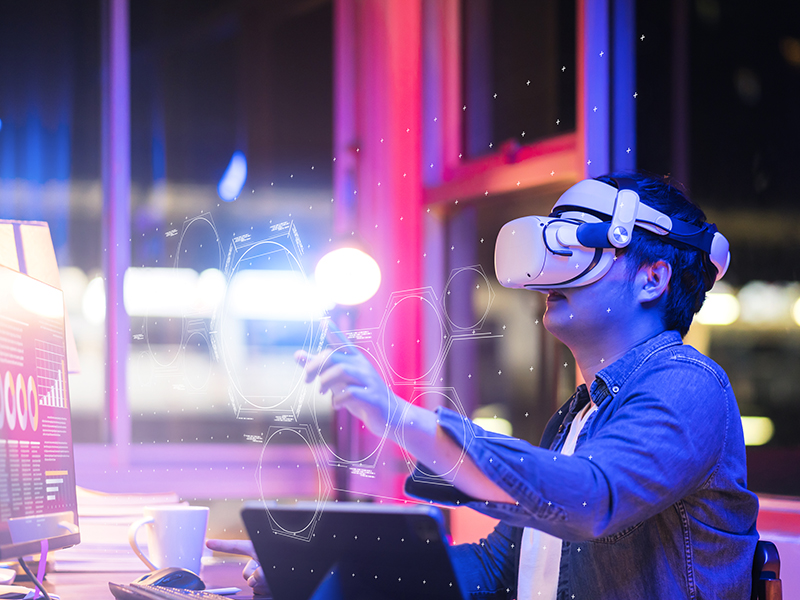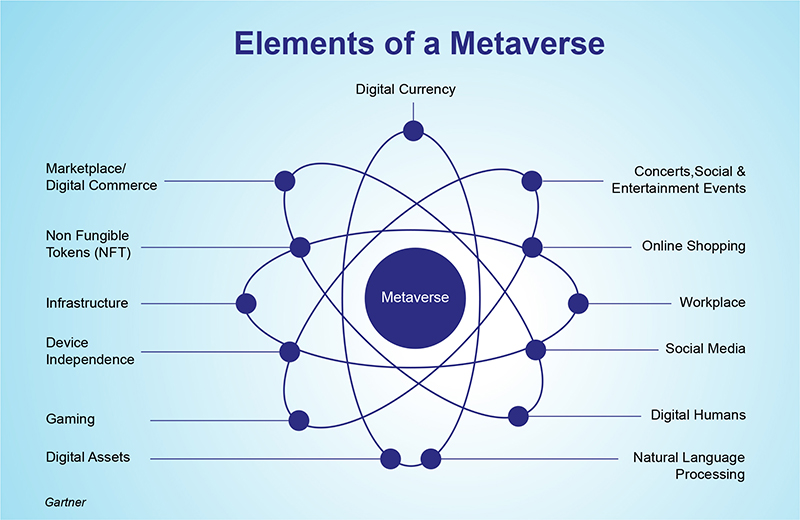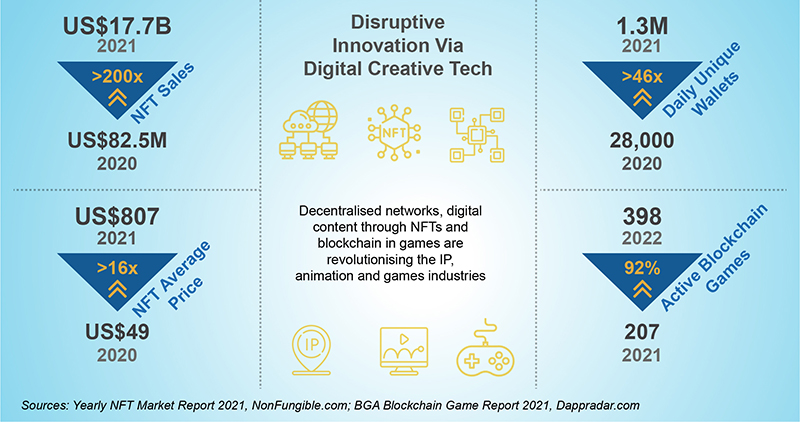
A study conducted by Gartner Inc. reported that a quarter of the global population is expected to spend at least an hour per day immersed in a metaverse for work, shopping, education, social media or entertainment by 2026.
This signifies that metaverse-related business models and technologies provide the platforms for the next level of interactions in the virtual and physical worlds. In technical terms, a metaverse is a virtual shared space formed by converging virtually-enhanced physical and digital realities.
In effect, the metaverse will be the next evolution of the internet, which started as individual forums and bulletin boards. These destinations are essentially locations in a virtual shared space, not device-dependent or owned by a single vendor. Instead, it has the potential to be an independent virtual economy enabled by digital currencies and non-fungible tokens (NFTs).

Metaverse in Web3
The term metaverse refers to interconnected virtual worlds allowing real-time interactions and experiences between physically separated people.
The metaverse is the next stage of development, manifesting itself in various ways such as gaming, online forums and professional settings where participants interact with a digital replica or avatar of themselves.
People use these avatars to communicate with one another and to grow the metaverse community. Digital currency, or NFTs, are used in the metaverse to purchase various products, including clothing, shielding and weapons for video games. Users can traverse the metaverse by using a virtual reality headset and controllers.
At this point, however, the metaverse is a series of disconnected metaverses, similar to the early versions of darpa.net, aol.net, or bit.net, which eventually came together to form the way we know it today.
Each metaverse world has its access, avatars, interactions, and currency. Fortnite, Roblox, Decentraland and Sandbox are the most well-known metaverses today.
The biggest phenomenon in the metaverse now is driven by the recent ability to own virtual objects, experiences or land fully.
Decentraland and Sandbox, for example, are both metaverse worlds that sell virtual land to businesses that build virtual buildings.
This is not a novel concept. During the dot.com boom of Web 1.0, purchasing domain names enabled people to profit. This concept of ownership is similar to the Web3-powered metaverse.


A proper metaverse universe creates possibilities beyond imagination, such as collaborating with a surgeon or creating a clay model of an innovative car design by removing the distance barrier.
Even Malaysian studios have begun to turn their attention to the metaverse. In Roblox and Sandbox, Monsta recently launched its own Monsta IP world, facilitating the expansion of unique animation IPs like BoBoiBoy and Mechamato. Additionally, they are working with PUBG Mobile, a game with metaverse potential.
Magnus Games Studio, another Malaysian business, debuted its metaverse in 2021, allowing people to tour the globe with a smartphone.
To date, they have been successful in luring a variety of businesses, in particular, educational institutions like SEGI College. SoCrwd enables businesses to create a distinctive online area that customers can visit rather than merely sifting through uninteresting websites.

Apart from that, SoCrwd users can connect with other users online and travel to fascinating places worldwide. Disney has made plans to integrate blockchain technology and the metaverse into its entertainment industry, theme parks and consumer products after realising the significance of the metaverse in advancing its story-telling.
This has sent a signal that capital is now flowing into Web3. Studios ought to lay out that strategy immediately and be prepared. The studios should concentrate on the metaverse to capitalise on profit-making opportunities. Malaysia Digital Economy Corporation (MDEC) identifies the metaverse as a realm of opportunities due to the amount of investment and capital that continues to pour into the space. This strongly indicates the enthusiasm of investors, developers and anticipated market demand.

Leading attributes of the metaverse, such the Web3, have boosted technical development, including the ownership of digital assets, and pushed the boundaries for engagement, entertainment, and experiences that closely match MDEC's aspirations.
As the metaverse and its supporting sectors grow, MDEC is partnering with extended reality (XR) communities, game developers, animation services and IP producers to identify potential collaborations that will boost Malaysia's competitiveness in digital content.